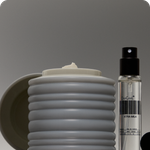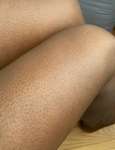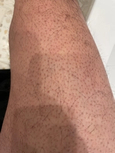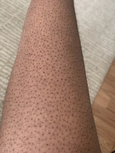5 common misconceptions about strawberry skin debunked
Strawberry skin, also known as strawberry legs, is a common skin concern that affects many, causing the appearance of dark spots on the legs that resemble the seeds of a strawberry.
Despite its prevalence, there are still many misconceptions surrounding this condition, leading to confusion and ineffective treatment solutions. We'll debunk the top myths about strawberry skin and provide you with the facts you need to tackle this skin condition.
Misconception #1: Strawberry skin is a permanent condition that cannot be improved
Fact: Strawberry skin is not a life sentence. With the right combination of skincare habits and products, it is possible to significantly reduce the appearance of dark/red spots and achieve smoother, more even-toned legs. Consistency is key–developing a regular exfoliation and moisturizing routine, along with being mindful of your shaving practices, can yield noticeable improvements over time.
Best Selling Set for Strawberry Skin

Soft Services
Smoothing Set
$100
fragrance-free
The one-click trick to adding what we know to be the best physical exfoliant, chemical exfoliant, and daily softening lotion to your basket.
Misconception #2: Strawberry skin is the same as ingrown hairs
Fact: Although strawberry skin and ingrown hairs can look similar, they are two distinct conditions. Ingrown hairs occur when hair grows back into the skin, causing redness, inflammation, and bumps. Strawberry skin, on the other hand, is characterized by the appearance of dark/red spots caused by enlarged or clogged hair follicles, and is generally accompanied by the pain or discomfort associated with ingrown hairs.
More Information
What’s the difference between strawberry skin, ingrown hair, KP, and folliculitis?
read nowMisconception #3: Moisturizing will clog pores and worsen strawberry skin.
Fact: Moisturizing is an essential step in maintaining healthy, balanced skin–even for those dealing with strawberry skin. The key is to choose a non-comedogenic moisturizer that won't clog your pores. Look for lightweight, easily absorbed formulas that contain ingredients like ceramides or glycerin, which help to hydrate and soothe the skin without leaving a heavy, greasy residue.
Misconception #4: The only way to get rid of strawberry skin is through laser hair removal
Fact: While professional treatments like laser hair removal can be effective for some individuals, they are not the only solution for strawberry skin. Many people find success with consistent at-home routines that include gentle exfoliation, moisturizing, and adjusting their shaving techniques. Incorporating products with alpha-hydroxy acids (AHAs) or beta-hydroxy acids (BHAs) can also help to unclog hair follicles and promote a more even skin tone.
More Information
How to get rid of strawberry skin
read now
Misconception #5: Strawberry skin, like keratosis pilaris (KP), tends to be a genetic condition
Fact: While keratosis pilaris (KP) is often confused with strawberry skin due to their similar appearance, they are two distinct conditions with different causes. KP is caused by the buildup of keratin plugs in the hair follicles, resulting in the formation of small, rough bumps on the skin. It is commonly associated with dry skin and tends to be genetic.
On the other hand, strawberry skin is not a genetic condition. It is a term used to describe the appearance of dark spots on the skin, particularly on the legs, which resemble the seeds of a strawberry. Strawberry skin is a natural byproduct of having pores and hair follicles, which everyone has, and is often a harmless side effect of shaving.
Get Updates
There’s more to come.
Sign up to receive periodical updates on Mass Index, and to be the first to know when Soft Services launches new products. (If we don’t have any updates, we won’t email you.)
Strawberry Skin
Small dark spots on the leg—enlarged pores and follicles that become clogged after shaving.
Also Called
Strawberry legs
Frequently Found On
Legs
Related Concerns
Learn More: Strawberry Skin

























